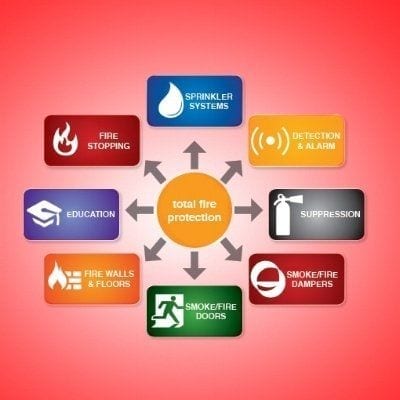Passive fire protection pfp is an integral component of the components of structural fire protection and fire safety in a building.
Passive smoke control system.
Each of these types of systems has its place and each can be a very effective means of safeguarding the building occupants from exposure to the products of.
A mechanical smoke control system uses fans to establish an airflow that prevents migration of smoke into means of egress or other key building areas while passive smoke control features use physical barriers to prevent smoke migration between different.
The most common systems referenced in current codes are atrium smoke exhaust systems and stair pressurization systems.
Smoke control systems can be either mechanical or passive just like ventilation systems.
This standard shall apply to the design installation acceptance testing operation and ongoing periodic testing of smoke control systems.
Smoke control systems or smoke management systems are mechanical systems that control the movement of smoke during a fire.
Pfp attempts to contain fires or slow the spread such as by fire resistant walls floors and doors.
The top of an atrium active smoke control can be divided into three subcategories.
Types of systems there are two basic types of smoke control systems.
Given the limited application of passive smoke control systems the focus is generally on active mechanical systems.
Find out information about smoke control system passive.
This leads to greater smoke accumulation on the top floor but the smoke is cooler by about 20 f 6 7 c in almost every scenario.
A system that shuts down fans and closes dampers to limit the spread of fire and smoke.
Pfp systems must comply with the associated listing and approval use and compliance in order to provide the effectiveness expected by building codes.
These systems fall into two categories.
Under reverse stack effect conditions where the exterior is hotter than the interior the smoke control system performance is the opposite of the case of normal stack effect.
Only the off condition shall de energize the smoke control equipment while providing a fault status as required by labc section 909.
Passive systems use smoke barriers or partitions to limit and control the movement of smoke in certain directions or allow it to accumulate in a properly sized reservoir e g.
The international building code and nfpa standards provide guidance on passive and active fire protection systems.
H hand auto off switches or controls provided for smoke control fans shall be removed programmed wired or locked in order for the switches or controls not to override the operation of the smoke control system.
A 1 1 this standard incorporates methods for applying engineering calculations and reference models to provide a designer with the tools to develop smoke control system designs.
Fire protection engineers should consider the building s construction fire suppression systems and smoke control when designing active and passive fire protection systems.
Pressurization exhaust and airflow.

